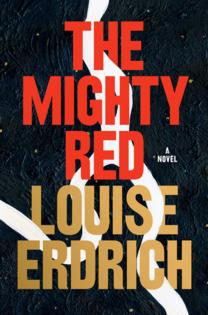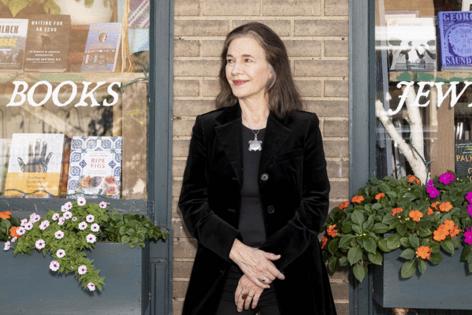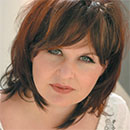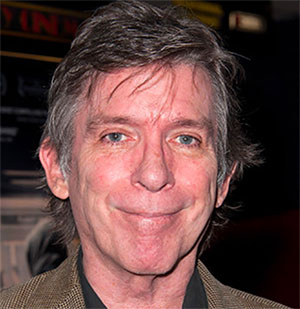Louise Erdrich's new novel is about 'ridiculous, awkward, magical' love
Published in Books News
“The Mighty Red,” the title of Louise Erdrich’s rambunctious new novel, definitely refers to North Dakota’s Red River, around which much of it is set, and probably refers to a large, red-headed character named Hugo.
A central event in “Mighty Red” is the marriage of a young woman named Kismet, but will she end up with brash Gary or gentle Hugo? Most of the characters have something to say about that, including Kismet’s mom Crystal, a truck driver who hauls sugar beets and whom Erdrich— a Pulitzer Prize winner for “The Night Watchman,” National Book Award winner for “The Round House” and owner of Birchbark Books in Minneapolis — says is something of a stand-in for her.
Erdrich, a member of the Turtle Mountain Band of Chippewa who lives in Minneapolis, has written 20 books.
Q: What came first when you were dreaming up “The Mighty Red”?
A: The first character I really thought about was Hugo. He goes back about 10 years and just kept plodding back into my notebooks with his obsessions about geology and energy and with his hapless ardor. I guess a lot of this book is about hapless ardor. Here we are, wired to mate, yet relationships are so ridiculous and awkward and, if you are lucky, magical.
The goal in my books is never to get two people together and leave them marooned, but to explore the tension and idiocy in a relationship. I mean, love. When love gets to a critical madness, people get married to reduce the madness to manageable increments of madness — like who keeps track of the vacuum cleaner attachments? Who deals with the mice? Who mislabeled the electrical box? Forget nosegays and frothed milk. Dawn dish soap becomes the thing you can’t live without. Like Kismet, you may end up making three-egg breakfasts for your husband’s family and eating your own breakfast out in the garage.
Q: Like “ The Sentence,” “The Mighty Red” is set in the recent past. Lots of “Sentence” readers were struck by your ability to evoke pandemic-era behaviors (like sanitizing the mail) that we engaged in, quit and then promptly forgot. Is it tricky to capture a past that most readers lived through?
A: You’re right. We forget the details of what we live through. This book is set in 2008-2009. The first hint I had of the mortgage crisis was running into someone I knew who was shaking and distraught over losing the house into which she’d sunk all she owned. It was devastating and it was happening everywhere.
Something like this happens to my somewhat alter-ego Crystal. There are other books about why and how this huge con game exploded, but I wanted to write about the way 2008-09 affected a few families. I thought about this a lot, how close we came to a serious economic depression, and how bad it was anyway. Part of my research was listening to the archived late night call-in shows with Art Bell, “Coast to Coast.”
Q: Which Crystal listens to, as well. Any more research?
A: Then I really lost my mind diving into how Roundup Ready seeds were developed, also at that time. I couldn’t think about anything but herbicides and pesticides. I became a known conversation killer. A lot of farming is degenerative as opposed to regenerative, and obviously that’s got to stop. Most of the farmers I know are doing their best to use few chemicals and do right by their land. They are some of the smartest people I know.
But they are running businesses. Sugar is a dirty business. However, sugar is delicious. At the end result of all those herbicides and petrochemicals and semi trucks and processing is pure, white, sparkly, granulated sugar. It is integral to our food chain now, it hits the pleasure centers in your brain like rocket fuel, and even having written this book I still love cake and ice cream.
Q: Many novels address climate crisis but I can’t recall one that makes it as easy to relate to as, for instance, the passage about the effort that goes into re-establishing prairie. Is it important to you to personalize for readers what we’ve done to our planet?
A: I wanted people to read this book, so to keep things cheerful I only sprinkled the dire stuff into the trauma of a wedding. You know — Absurd Proposal, Strange Vows, Violent Wedding Dinner, Questionable Marriage, Aftermarriage. Maybe the real bond is with the land and sky. The book is also a love letter to the Red River Valley, where I grew up. The valley along the river has changed drastically during my life and I wanted to know why. I wasn’t looking for simple answers or heroes and villains (except Hugo, hero). Nothing lines up that way.
Q: The title character of the book, or at least one of them, is a river, which you describe as “everything.” Can you talk about how living in a river valley shapes these people?
A: Are you asking whether there is a character trait that people who live along and depend on a river share? Or a lake? I don’t know — maybe love of walleye? Certain members of my family and I have been conducting a longitudinal study of who — aside from my brother Ralph — makes the best fried walleye in the Upper Midwest. We have a long way to go, but so far the Creekside Supper Club (Red Lake walleye) comes closest to the sine qua non of walleye (without which life is meaningless) on a good night at the Sky Dancer Casino (Lake Winnipeg walleye) in the Turtle Mountains. If people want to write to the Minnesota Star [Tribune] with the results of their own studies, that would be great. Just don’t contact me about this. I can’t let any extraneous information spoil the parameters of my own investigation.
Q: I can’t wait to see that striking cover in stores. I know it’s designed by your daughter, Aza Abe, who has done many of your covers. How important are covers to you, as both a writer and bookseller?
A: Covers tell the bookseller and the reader how much a publisher cares about the book. (An author usually doesn’t get much say.) I love how covers can be art that wasn’t created for the book and yet be all about the book. When I am bowled over by a new novel in manuscript, and then the final cover isn’t good enough for the book, I’m so upset.
I’m beyond lucky to have my daughter Aza Abe, a remarkable woman and tremendous artist, as the cover artist. I’m so grateful that she and I were able to start working together. Every one of her covers is stellar and says something about the book that can only be said visually. A reader should turn back and forth from the text to the cover and always find something to think about. That always happens with her images.
Take this particular cover. Aza’s image is about the origin of the Red River, where three rivers come together and flow north. The river is white because it’s sugar. The earth is deep black with gold flecks because good soil is the earth’s wealth. The letters are strong and bold because that’s the river, too.
Q: You never seem to judge your characters. Has that always been crucial to your work? Do you have other “rules” for writing?
A: A lot of being a writer is getting out of your own way. I try to simply report on what the characters are doing and thinking. If I make a judgment, it is in the voice of a character reflecting on what they’ve done. It’s not that I’m so high-minded, it’s more that it’s intrusive for a writer to make a judgment. And the reader is bound to wonder why, if you, the writer, have such a poor opinion about your character, why not just redeem them? I am opposed to redemption in a book. Maybe that’s a rule, but I break that rule if it needs breaking.
Q: What surprised you most in writing this novel?
A: The arrogant wealthy jock, Gary, surprised me. What a jackass. But then as I wrote him, I began to discover how vulnerable he was, how ridiculous, how haunted. He became my favorite character to write.
Q: Gary — and much of “The Mighty Red” itself — is really funny. Readers are going to get a bang out of these people (one line I’m thinking of is, “She loved Hugo with that superb kind of love a mother has for a male child, a love that is deeper and more pure for knowing that he’ll more than likely turn out a fool.”). Obviously, writing a novel is hard work, but was it fun to hang with these characters?
A: Yes, most days I’m lying on the floor, just wiped out, but it’s worth it on the days I’m laughing my head off.
Q:“The Mighty Red” is tough but hopeful. Do you find your way toward hope in the act of storytelling or is it in you already and that’s what pulls the story toward hope?
A: I don’t see the point of writing a book that doesn’t hold out hope. Things are getting so dire that, no matter how annoying and crazy-making we all are, we have to pull together. We need to work on a livable world. Nihilism just strikes me as lazy, and pretentious. Anyway, it’s the serious people who are leading with hope in these times.
Q: I don’t want to spoil it for readers but that last paragraph is such a knockout. What was the hardest part of “The Mighty Red” to get right? Or the easiest?
A: Chris, I’m so glad you liked the end! It was the one and only page in this whole book that was easy to write. I just wrote it down and didn’t change a word. And then I cried.
©2024 The Minnesota Star Tribune. Visit at startribune.com. Distributed by Tribune Content Agency, LLC.
















Comments